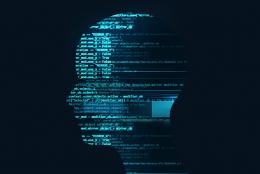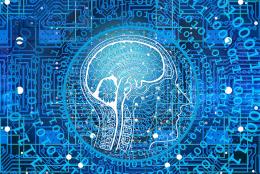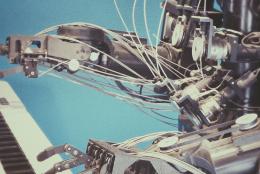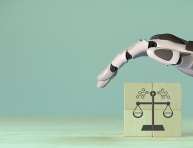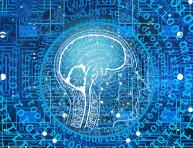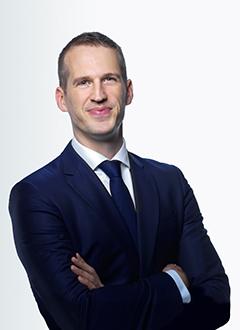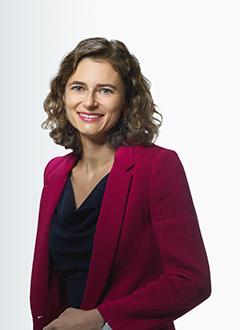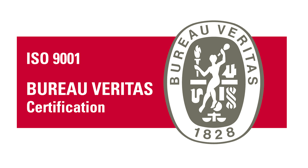Article

Patentability of simulation methods: G 1/19
This article is also available in French.
The Enlarged Board of Appeal of the European Patent Office (EPO) issued on March 10, 2021 the long-awaited decision G 1/19 concerning the assessment of the inventive step of computer-implemented simulation.
This is the second decision of the Enlarged Board of Appeal concerning computer-implemented inventions, after decision G 3/08 of May 2010.
The questions posed to the Enlarged Board of Appeal concern more specifically simulation methods, but the answers provided are applicable to all computer-implemented inventions, including inventions related to artificial intelligence.
Before detailing the answers given by the Enlarged Board of Appeal, it is useful to recall the context of this decision.
To do so, let us first look at the way in which the patentability of computer-implemented inventions is assessed, and then discuss the decision T 0489/14 which gave rise to the referral of the case to the Enlarged Board of Appeal in the context of case G 1/19.
The EPO's current approach to computer-implemented inventions
Nowadays, the EPO rarely rejects patent applications on the grounds that they claim computer programs as such or methods of performing intellectual activities (Article 52(2)(c) EPC). As regards computer-implemented inventions, technical or non-technical contributions are, according to the approach adopted in Decision T 641/00 (Two Identities/COMVIK) of September 2002, carefully evaluated under the criterion of inventive step (Article 56 EPC).
This approach admits that the claims of a patent may combine technical and non-technical features (mixed type invention).
In assessing the inventive step of such mixed-type inventions, all features contributing to the technical character of the invention are taken into account, including features which, when considered in isolation, are not technical but which, in the context of the invention, contribute to a technical effect for a technical purpose.
Features that do not contribute to the technical character of the invention cannot support the existence of an inventive step.
In general, non-technical features can contribute to a technical character in two ways:
- the non-technical feature (e.g., a mathematical algorithm) is applied to a technical field so as to serve a technical purpose (e.g., to separate speech signals and provide speech recognition),
- the non-technical feature is adapted to a technical implementation (e.g. an operating system to run a computer hardware by optimizing the use of its resources).
If neither of these two situations occurs, the non-technical feature may not be considered when assessing the inventive step, and a lack of inventive step objection may be raised.
The EPO's previous approach to simulation methods
The previous approach of the EPO is based mainly on the decision of the Board of Appeal T 1227/05 (Circuit Simulation I/INFINEON TECHNOLOGIES) of December 2006 concerning a method for simulating or modelling the behaviour of an electronic circuit subjected to 1/f noise.
Electronic circuits are subject to noise that affects the voltage, current or magnetic field of the various active or passive components of the circuits.
Among the different types of noise that exist, some are frequency-dependent, such as scintillation noise, whose spectral density varies inversely with frequency (f). This type of noise affects devices of a very large variety and is due to lack of homogeneity in the realization of the components.
In decision T 1227/05, the Board of Appeal cites the COMVIK approach described above and recalls that beyond its implementation, a procedural step may contribute to the technical character of a method only to the extent that it serves a technical purpose of the method.
The Board is convinced that simulation of a circuit subject to 1/f noise constitutes an adequately defined technical purpose for a computer-implemented method, provided that the method is functionally limited to that technical purpose.
The Board then indicates that, beyond its implementation, a process step can only contribute to the technical character of the process if it helps to achieve one of the technical purposes of the process.
The Board also states that the simulation of a circuit subject to a 1/f noise constitutes an adequately defined technical purpose of a computer-implemented method, as the claimed method is functionally limited to that purpose.
In support of its demonstration, the Board of Appeal emphasizes that the general evocation of an undefined technical purpose (simulation of a "technical system”) is not sufficient, but that, in this case, a particular circuit whose behaviour is described by means of differential equations, constitutes an adequately defined class of technical items, whose simulation can fall under a functional technical feature.
The Board states, in a broader way, that:
"Simulation performs technical functions typical of modern engineering work. It provides for realistic prediction of the performance of a designed circuit and thereby ideally allows it to be developed so accurately that a prototype's chances of success can be assessed before it is built. The technical significance of this result increases with the speed of the simulation method, as this enables a wide range of designs to be virtually tested and examined for suitability before the expensive circuit fabrication process starts.
Without technical support, advance testing of a complex circuit and/or qualified selection from many designs would not be possible, or at least not in reasonable time. Thus computer-implemented simulation methods for virtual trials are a practical and practice-oriented part of the electrical engineer's toolkit. What makes them so important is that as a rule there is no purely mathematical, theoretical or mental method that would provide complete and/or fast prediction of circuit performance under noise influences."
The appeal T 0489/14 and the referral to the Enlarged Board of Appeal in G 1/19
In the intermediate referral decision T 0489/14 (Pedestrian Flow Simulation/CONNOR) of February 2019, the Board of Appeal referred the Enlarged Board of Appeal with three questions relating to computer-implemented simulations.
Appeal T 0489/14 was filed against a decision of the Examining Division on a patent application for a computer-implemented method for simulating the movement of an entity, e.g. a pedestrian, in an environment, e.g. a building. The purpose of the simulation was to help design a place such as a train station, a stadium or a road infrastructure.
Based on a preliminary analysis, the Board of Appeal expressed the opinion that the subject matter of the main claim lacked an inventive step. However, the applicant referred to T 1227/05, detailed in the previous point, to argue that modelling the movement of pedestrians in an environment is a sufficiently defined technical objective of a computer-implemented method.
The Board of Appeal ackowledged that the appeal was similar to case T 1227/05 and that a decision to the contrary would lead to legal divergence and uncertainty for the applicants. It therefore decided to submit the following questions to the Enlarged Board of Appeal in the context of Case G 1/19:
1. In the assessment of inventive step, can the computer-implemented simulation of a technical system or process solve a technical problem by producing a technical effect which goes beyond the simulation’s implementation on a computer, if the computer-implemented simulation is claimed as such?
2. If the answer to the first question is yes, what are the relevant criteria for assessing whether a computer-implemented simulation claimed as such solves a technical problem? In particular, is it a sufficient condition that the simulation is based, at least in part, on technical principles underlying the simulated system or process?
3. What are the answers to the first and second questions if the computer-implemented simulation is claimed as part of a design process, in particular for verifying a design?
In other words, the issue is whether computer-implemented simulations are patentable, whether the nature of the system or process being simulated is relevant to the patentability examination, and whether it is useful or necessary for the simulation to address the "technical" aspects of the system or process under consideration. The broader issue is how to draft a claim concerning an invention that includes or uses a simulation method.
Numerous amicus curiae briefs (personalities or organizations, not directly related to the case) were submitted in the context of the referral, by associations or companies. The President of the EPO also submitted comments, a unique fact, reflecting the importance of this referral.
An oral hearing was held on July 15, 2020, which was attended by nearly 1,600 people via a live webcast.
The answers of the Enlarged Board of Appeal
After rephrasing question 2, the Board answers the three questions as follows:
1. A computer-implemented simulation of a technical system or process that is claimed as such can, for the purpose of assessing inventive step, solve a technical problem producing a technical effect going beyond the simulation’s implementation on a computer.
2. For this assessment it is not a sufficient condition that the simulation is based, in whole or in part, the technical principles underlying the simulated system or process.
3. The answers to the first and second questions are no different if the computer-implemented simulation is claimed as part of a design process, in particular for verifying a design.
In connection with the first question, the Enlarged Board of Appeal recalls in particular that the long-established COMVIK approach applies to computer-implemented simulations in the same way as to all computer-implemented inventions, including for the purpose of determining whether a claimed feature contributes to the technical character of the invention.
Any technical effect beyond the normal electrical interactions within the computer on which the simulation is implemented (i.e., any "additional technical effect") is considered to support an inventive step.
A feature of a computer-implemented method can contribute to the technical character of the invention if it is related to a technical effect in the form of an input (e.g. the measurement of a physical value) or an output (e.g. a control signal for a machine). But such a direct link to physical reality is not necessary in all cases, and the Enlarged Board of Appeal recognizes in particular that in simulation methods as such, few technical effects are usually produced in connection with the input or output of the method.
On the other hand, the Enlarged Board of Appeal gives two examples in which the simulation method itself may produce technical effects:
- the first is the case where the model used in the simulation, whether it concerns a technical object or not, involves adapting the computer system implementing the simulation or its operation. In this respect the Board states that technical effects can be induced by a software program or an algorithm if it is adapted to the internal operation of the computer system,
- the second case is when the model used in the simulation constitutes the basis for a subsequent technical use using the results of the simulation, i.e. a use having an impact on physical reality.
The Board emphasizes that in both cases, the subsequent technical use or adaptations of the model to a computer or its operation must be specified in the claims.
This answer to the first question thus seems rather favourable to the inventors of simulation methods as it underlines the possibility of deriving technical effects from a simulation method, even if it does not concern a technical process or device.
Regarding the second question, the Enlarged Board of Appeal states that a simulation method is necessarily based on the technical principles underlying the simulated system or process. Even if these principles can be described as technical, the Enlarged Board of Appeal considers that this is neither sufficient nor necessary to establish the technical character of the simulation.
For simulation methods, as for other computer-implemented methods, a case-by-case examination of the technical character must be carried out and it must be determined whether the claimed simulation method contributes to solving a technical problem.
The impact of G 1/19 on inventions related to artificial intelligence
It should be noted that, in its decision (point 104), the Enlarged Board of Appeal indicated that the main features of a computer-implemented simulation are:
- a numerical model of a system or process (which may be technical or non-technical) in the form of data that can be processed by a computer;
- equations representing the behaviour of the model (which may include random functions);
- algorithms providing a numerical output that represents the calculated state of the modelled system or process (in particular, by time increments or as a sum or average calculated on the basis of numerous random events).
It is interesting to note that this definition, in that it implies equations representing the model behaviour, seems to exclude simulation methods in which the model behaviour is defined by other elements than such equations. We can mention the particular case of a model based on decision trees, where the results of the model are defined by a series of logical tests. We may also cite expert systems or Machine Learning algorithms such as Random Forest, in the case of models related to artificial intelligence using decision trees. Of course, not all artificial intelligence models are excluded by this definition. Neural networks can, for example, be defined by a sequence of mathematical equations.
The impact of Decision G 1/19 on the patentability of inventions related to artificial intelligence is not yet measurable, but the answers provided by the Enlarged Board of Appeal in the context of this decision should also shed light on the practice of the Office on the patentability of inventions related to artificial intelligence, especially in cases where artificial intelligence is not applied to a specific technical system.
Indeed, the patentability issues raised by simulation methods and artificial intelligence methods are very similar.
Computer simulation and Machine Learning are both based on mathematical models and algorithms, and both can be applied to technical and non-technical systems.
In the specific case of pedestrian flow modelling, which is the application targeted in T 0489/14, it is known to train simulation models of pedestrian movement, these virtual pedestrians being sometimes themselves used to train models of vehicle behaviour by reinforcement learning, in the context of autonomous driving of these vehicles.
Other models resulting from Machine Learning techniques are used for instanceto simulate the behaviour of a fluid or particles in an environment.
Another example is the case of inventions related to product design software, used in all areas of industry to reduce the costs of research and development phases.
Conclusion
The G 1/19 decision does not seem to fundamentally change the established case law of the European Patent Office. Nevertheless, the application of the answers given by the Enlarged Board of Appeal in the next decisions of the Boards of Appeal concerning computer-implemented methods will have to be monitored.
It is interesting to note that the Enlarged Board of Appeal follows the main opinion of the professionals that computer-implemented simulations can be patentable, even in cases where the simulated process or device is not technical.
Drafting patent applications for these simulation methods requires particular vigilance on the formulation of the technical problem solved by the invention and on the clear presentation of the subsequent technical uses or technical interactions with the equipment used to perform the simulations.
Plasseraud IP group, composed of experts in the various branches of intellectual property law, is able to assist you on the patentability issues of computer-implemented inventions.













